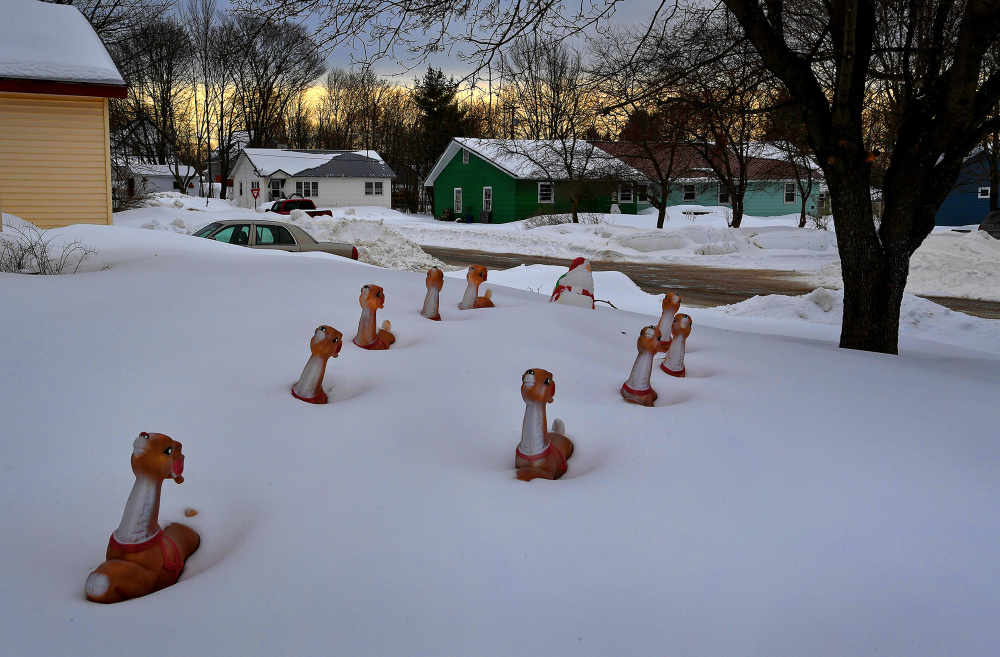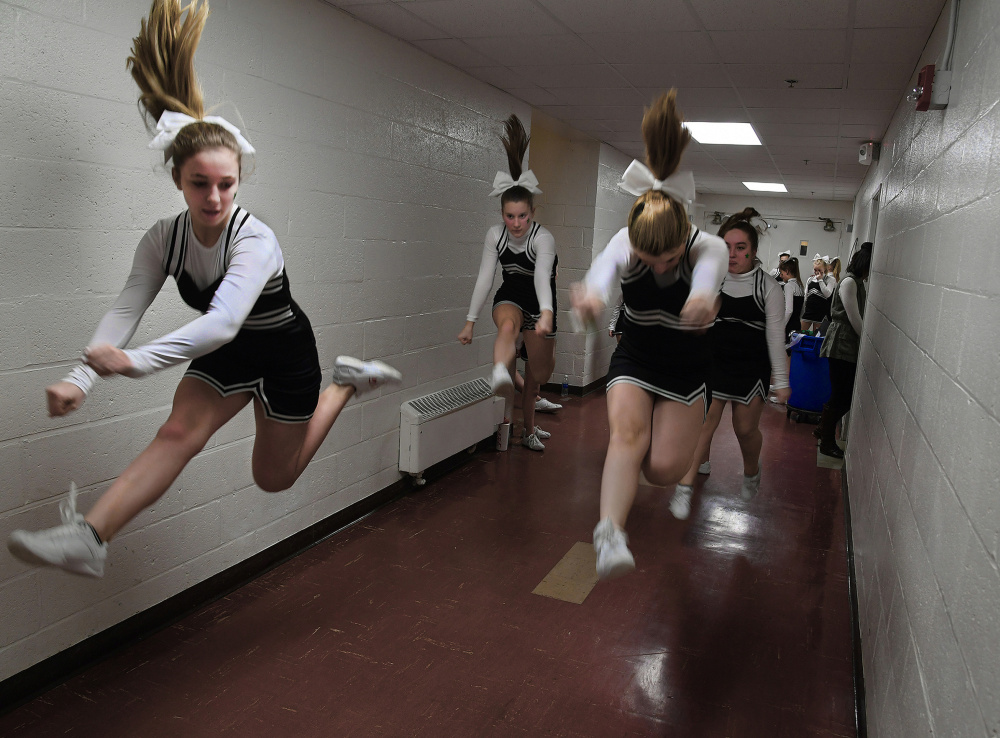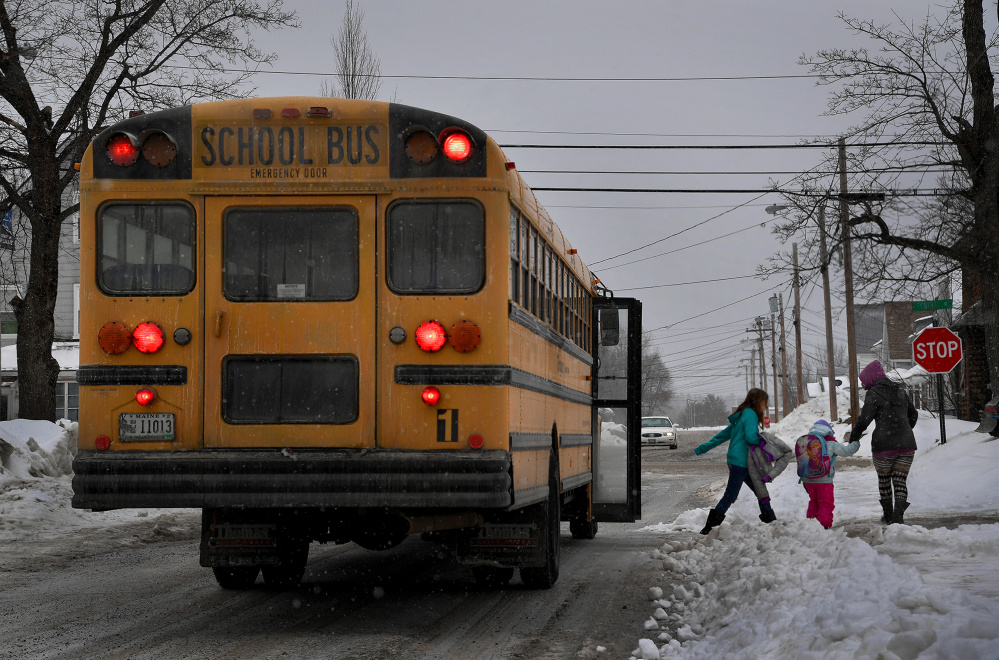EAST MILLINOCKET — The small parking lot outside of Schenck High School was crammed with cars, all there for the basketball game, the town’s featured event that night. The cold winter air whipped around mounds of snow lining the town’s few residential streets and past the school to the vanishing blackness of Interstate 95.
This small, remote high school is perhaps East Millinocket’s last and most crucial community pillar. Even before the local paper mill shut down three years ago, the town had suffered a stark economic decline because of the mill’s dwindling profits and the widespread poverty that followed. With a shrinking tax base and an aging population, Schenck High faces an uncertain future.
Washington has long designed education policy to deal with urban and suburban challenges, often overlooking the unique problems that face rural schools like this one. With a new administration in the White House that prefers “school-choice” approaches – favoring charter schools and private-school vouchers so parents can opt out of public schools and bring taxpayer dollars with them – the nation’s rural schools are left to wonder about their fate.
Education Secretary Betsy DeVos’ emphasis on school choice means very little out here in the wilds of northern Maine, where the closest alternatives are all impossibly far away. For students here, Schenck is really the only choice.
Eric Steeves, superintendent of schools in East Millinocket, said in an interview Wednesday that rural schools are often left out of conversations about policy decisions in Washington and in Maine. Those like Schenck – institutions that educate millions of students nationwide – stand to gain very little from the school-choice model. If anything, it could siphon away critical funding.
“That could be disastrous. We’d lose tuition money. If we’re forced to bus students wherever they want, it would be catastrophic,” Steeves said, pointing out that Bangor schools are at least an hour away. “It depends on how it’s organized. … It may be up to their town to pay for that. And in this weather, it would be horrific.”
Sitting at the base of Mount Katahdin 60 miles north of Bangor, East Millinocket is a classic New England vision, even in the dead of winter. But the region’s beauty conceals systemic poverty and joblessness afflicting many of the town’s 2,000 residents.
Just more than half of Maine’s students attend rural schools, as do nearly 9 million of the 50 million public school students across the country, according to a forthcoming report from the Rural School and Community Trust. Many of those schools look like this one in East Millinocket, where post-industrial decline and poverty has amplified the role it plays in the community even as funding has become more scarce.
Advocates say they hope President Trump will do better than previous administrations, given that rural voters across vast swaths of the country helped put him into office. But they are concerned that Trump’s so-far singular focus on expanding access to vouchers and charter schools will do nothing meaningful to help.
“It’s always the … political types of people that make these decisions. We are left out,” Steeves said.
The plight of rural schools became a lightning rod this month amid confirmation hearings for DeVos, who has strongly advocated for alternatives to public schools.
DeVos, a Michigan billionaire, has drawn widespread protest, particularly from the nation’s educators; a National Education Association campaign drew more than a million email complaints to Congress ahead of her confirmation this week.
Her lack of experience in public education, her support for vouchers, and a rough performance during her confirmation hearing made her one of the most controversial of Trump’s Cabinet picks, leading two Republican senators – Alaska’s Lisa Murkowski and Maine’s Susan Collins – to vote against her. Her focus on choice, they said, does little to acknowledge rural needs.
“The mission of the Department of Education is broad, but supporting public education is at its core,” Collins said on the Senate floor on Feb. 1, announcing her opposition to DeVos. “I am concerned that Mrs. DeVos’ lack of experience with public schools will make it difficult for her to fully understand, identify, and assist with those challenges, particularly for our rural schools in states like Maine.”
CHOICE IS NOT AN OPTION
But what comes next for rural schools is unclear. Advocates say there are countless education issues more relevant to rural America than choice, because in many of the isolated areas of the country, there aren’t many choices.
Rural schools have trouble recruiting and retaining good teachers and principals because housing is so limited, pay is so low and working conditions so difficult, education advocates say. Trump has decried failing public schools that are “flush with cash,” but many rural schools – hobbled by a poor local tax base and weak state support – struggle with tight and often shrinking budgets.
Sen. Mike Enzi, R-Wyo., asked DeVos during her confirmation hearing to explain how her zeal for vouchers and choice would translate to rural places. “Certainly, rural schools in rural settings require different approaches and different options,” DeVos said. She said individual states would be best equipped to design policies for their rural communities, but she envisions an “opportunity for more choices and options” through distance learning and online courses.
Steeves stood just outside his office at Schenck High, taking a moment to point up toward the hallway ceiling, an unremarkable stretch of off-white. “Without that, we’d probably be shut down by now,” he said.
Steeves, the superintendent of schools, was talking about the multimillion-dollar roof repair completed in 2014, funded by a philanthropic Powerball winner. It was another Band-Aid – this one a miracle – in a rural American town full of them.
For small towns like this one, the survival of a local school can be pivotal for the survival of the town itself.
“If you shut down schools, you destroy a town,” Steeves said Wednesday evening while the town gathered for a high school basketball game. “There wouldn’t be any viable base for anyone or anything here.”
Trump, meanwhile, has said he will create a new $20 billion program to encourage states to expand vouchers, which funnel taxpayer dollars to private and religious schools as well as charter schools. In places like northern Maine, where those types of schools are scarce, the public schools are often the only real choice for most families.
SCHOOL IS ‘THEIR ANCHOR’
On Wednesday, East Millinocket’s residents gathered to cheer on the high school’s basketball team. Mark Scally, the chairman of the town’s Board of Selectmen, presided over the pep band that night. He has lived in the region since 1982 and worked at Schenck High for nearly three decades before retiring 12 years ago; he came out of retirement this school year to fill in as a music teacher. He estimates that the entire K-12 population in East Millinocket now has fewer students than the high school alone had when he moved here.
“The the thing is, without the mills … the schools are the only thing they really have to hang onto,” Scally said. “It is their anchor.”
The ensuing decline in revenue has led to interesting arrangements.
The town’s elementary school, Opal Myrick, moved into the Schenck High facility at the turn of the decade but retained its name; the single facility now houses kindergarten though grade 4, as well as 9 through 12, with 170 students in elementary school and 120 in high school.
East Millinocket also has consolidated its arts program with nearby Millinocket, which is a separate town with a separate school system, and shares music teachers, show choirs, and the annual musical.
And everyone on staff, it seems, is playing dual roles. In addition to being superintendent, Steeves also is the school’s guidance counselor, does curriculum work and teaches remedial social studies classes.
Many of America’s far-flung communities simply don’t have such alternatives to the local public school system within reasonable driving distance. In Alaska, more than three-quarters of communities are not reachable by road at all.
“What makes it a moot point for us in many ways is the travel, which would make things very difficult. Many parents are reluctant to have their kids on Maine’s icy roads in the winter,” Steeves said. “But it depends on what extreme school choice becomes. We don’t know, none of us know. . . . If we’re forced to bus students wherever they want, which would be catastrophic, that could be disastrous. We’d lose a lot of tuition money.”
Sarah Libby, a local musician and parent, said that if she had to choose a school, she would prefer Stearns, where her son is enrolled, over the schools in East Millinocket. Libby’s daughter, who lives with her father, attends Opal Myrick Elementary at the Schenck High facility. “Did you go over and see that school?” she asked, referring to Schenck.
The superintendents of Millinocket and East Millinocket schools operate a program that allows students to swap districts – a form of public school choice – but very few families use that option. Libby agrees that’s because the schools are so closely tied to the town’s identity:
A SHRINKING STUDENT BODY
Some rural communities do have a private school, but such schools are often deeply religious and therefore not a choice for everyone, said Alan Richard, chairman of the board of the Rural School and Community Trust, a nonprofit advocacy organization. It is also difficult to start schools in such areas because of small populations and low funding.
And there are segregation concerns at play as well: Across the South, there are private schools that were founded as segregation academies, meant to give white families a place to send their children to avoid black public school classmates after the U.S. Supreme Court ordered the desegregation of public schools in 1954. “I don’t think most taxpayers are going to want those schools benefiting from a school choice program,” Richard said.
One version of choice – online learning – also isn’t always an option for the nation’s rural enclaves. Noelle Ellerson Ng, a policy expert at the American Association of School Administrators, which represents school district superintendents, said rural areas often struggle with poor access to the internet, making online learning difficult.
“You have some rural areas that don’t have the connectivity to support online learning,” she said. “To premise a so-called innovation or opportunity on technology before it’s fully there is disingenuous.”
Frank Boynton, the schools superintendent of Millinocket, said that he has lost some students to online charter schools and to nearby religious private schools. That came, he said, at a steep cost to his district’s high school and the kids who remain. (Stearns High has approximately 520 students enrolled in grades 6 through 12.)
“Every time I lose a student somewhere, it’s five or six thousand dollars,” he said. “You lose seven students, that’s a teaching position.”
Send questions/comments to the editors.





Success. Please wait for the page to reload. If the page does not reload within 5 seconds, please refresh the page.
Enter your email and password to access comments.
Hi, to comment on stories you must . This profile is in addition to your subscription and website login.
Already have a commenting profile? .
Invalid username/password.
Please check your email to confirm and complete your registration.
Only subscribers are eligible to post comments. Please subscribe or login first for digital access. Here’s why.
Use the form below to reset your password. When you've submitted your account email, we will send an email with a reset code.